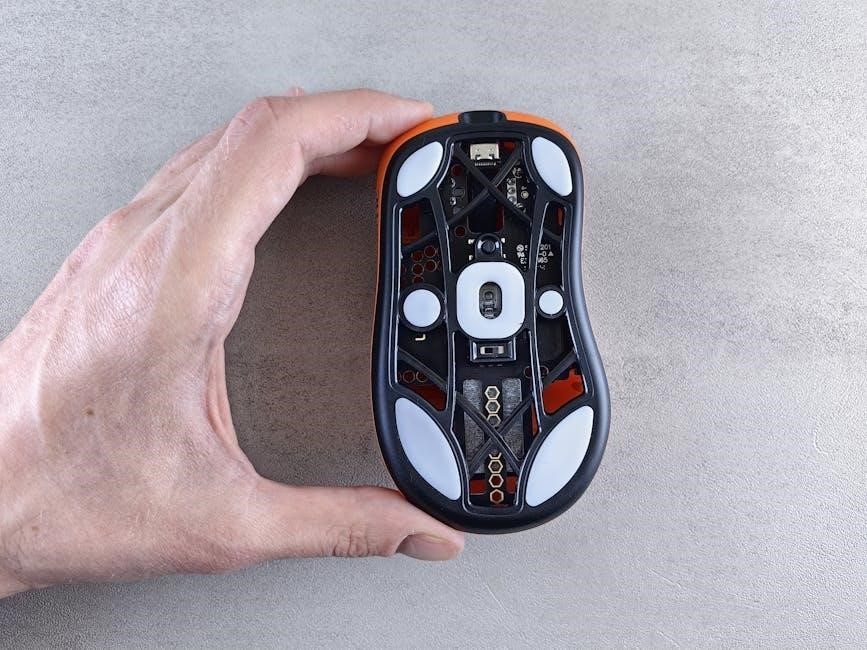
button size guide
A well-designed button size is crucial for user interface (UI) effectiveness, balancing functionality and aesthetics. Proper sizing ensures usability across devices, enhancing user experience and accessibility. This guide explores optimal button dimensions for various platforms and audiences, helping designers create intuitive and visually appealing interfaces.

Importance of Button Size in User Interface Design
Button size plays a critical role in user interface (UI) design, directly impacting usability and user experience. Properly sized buttons ensure that users can interact with ease, whether on desktop or mobile devices. Buttons that are too small may be difficult to tap, leading to frustration, while overly large buttons can disrupt the layout and visual hierarchy. The size of a button also communicates its importance; larger buttons typically denote primary actions, guiding users toward key functionalities. Additionally, button size affects accessibility, as it ensures that users with motor impairments or visual disabilities can interact comfortably. Consistent button sizing across an interface enhances predictability and reduces cognitive load, making navigation more intuitive. Ultimately, well-designed button sizes strike a balance between aesthetics and functionality, creating a seamless and efficient user experience.

Standard Button Sizes Across Different Platforms
Button sizes vary across platforms to ensure usability and consistency. Web buttons typically range from 32x32px to 48x48px, while mobile buttons are larger for touch-friendly interfaces, often 48x48px or more.

Web Button Sizes
Web button sizes are designed to ensure usability and consistency across various screen resolutions. Typically, web buttons range from 32×32 pixels to 48×48 pixels, with larger sizes for primary actions and smaller for secondary or tertiary actions. The size should reflect the button’s importance and function, making it easy for users to click without difficulty. For example, a primary call-to-action button might be 48×48 pixels, while a cancel button could be smaller, around 32×32 pixels. Additionally, padding is crucial to avoid overcrowding and ensure text is readable. Proper spacing around buttons also prevents accidental clicks. Consistent button sizing across a website enhances user experience by providing a predictable interface. Designers should also consider touch targets, especially for mobile web designs, where buttons need to be at least 48×48 pixels to accommodate finger taps. This ensures accessibility and usability across all devices.
Mobile Button Sizes
Mobile button sizes are critical for touch-based interfaces, ensuring ease of use on smaller screens. The recommended minimum size for mobile buttons is 48×48 pixels, as this accommodates the average human finger size, providing a comfortable touch target. Larger buttons reduce the risk of accidental taps and improve usability. However, buttons should not be too large, as they can overwhelm the screen and hinder navigation; Spacing between buttons is also important to prevent unintended presses. For primary actions, slightly larger buttons (around 56×56 pixels) can be used to draw attention. Consistency in button sizing across the app enhances user experience by creating a predictable interface. Designers should also consider platform-specific guidelines, as some operating systems may recommend slightly different sizes. Ultimately, mobile button sizes must balance functionality, aesthetics, and user comfort to ensure intuitive interaction.

Factors Influencing Button Size
Button size is shaped by user experience, device type, and design hierarchy. It must accommodate finger sizes for touchscreens and ensure visibility on varying screen sizes, aligning with platform standards.
User Experience and Usability
Button size plays a critical role in user experience and usability. Properly sized buttons ensure that users can interact with ease, reducing frustration and errors. Buttons that are too small may be difficult to tap, especially on mobile devices, leading to accidental presses or missed clicks. Conversely, buttons that are too large can overwhelm the interface, making it visually cluttered and less intuitive.
Research indicates that buttons should be large enough to accommodate the average finger size, typically around 48×48 pixels for touchscreens, to ensure comfortable interaction. Additionally, consistency in button sizing across an interface helps users develop muscle memory, making navigation more seamless.
Accessibility is another key consideration. Buttons must be sufficiently large and spaced to accommodate users with motor impairments. Clear visual hierarchy and feedback also enhance usability, ensuring users understand when a button is interactive and can see the results of their actions. By prioritizing user-centric design, buttons can effectively guide users through an interface, improving overall satisfaction and engagement.

Device Type and Screen Size
Device type and screen size significantly influence button size and design. Desktop interfaces typically accommodate larger buttons, as users interact with a mouse or keyboard, while mobile devices require smaller, touch-friendly buttons.
For mobile apps, buttons should be at least 48×48 pixels to ensure comfortable tap targets, accounting for the average finger size. On desktops, buttons can be slightly smaller but should remain large enough for easy clicking.
Screen size also plays a role in button scaling. Larger screens may allow for bigger buttons, but they should not overwhelm the interface. Responsive design is key, ensuring buttons adapt to different orientations and resolutions.
Accessibility is crucial, as larger buttons are easier to interact with on smaller screens. Testing button sizes across various devices helps ensure consistency and usability, making interfaces more intuitive for all users.

Best Practices for Designing Buttons
Effective button design involves consistency, clear labeling, and appropriate sizing. Ensure buttons are easily clickable, with sufficient padding and contrast. Use color and hierarchy to prioritize actions, and provide visual feedback on interaction.
Touch Target Sizes for Accessibility
Touch target sizes play a critical role in ensuring accessibility and usability. Buttons should be large enough to be easily tapped, with a minimum size of 48×48 pixels for web interfaces and 50-60 pixels for mobile devices. This ensures that users with motor impairments or those using touchscreens can interact with buttons comfortably. Smaller buttons may lead to accidental taps or frustration. The size should also account for finger ergonomics, balancing functionality with visual design. Proper spacing between buttons is equally important to prevent unintended interactions. By adhering to these guidelines, designers can create inclusive interfaces that cater to all users, including those with disabilities. Accessibility standards emphasize consistency and clarity, making touch targets a fundamental aspect of user-centered design. Ignoring these standards can result in poor user experiences and decreased accessibility. Always prioritize user needs when determining button sizes for optimal engagement and satisfaction.
Visual Hierarchy and Button Prominence
Visual hierarchy is essential for guiding users’ attention and ensuring buttons stand out. Button size plays a significant role in establishing prominence, with larger buttons naturally drawing more focus. Primary actions should be represented by the most prominent buttons, using size and color to differentiate them from secondary or less important actions. A clear visual hierarchy helps users understand the flow of the interface and makes decision-making easier. Proper spacing and layout also contribute to this hierarchy, ensuring buttons are not overwhelmed by other elements. Labeling buttons with clear, actionable text further enhances their prominence. Avoid overloading the interface with too many prominent buttons, as this can create visual clutter. By balancing size, color, and placement, designers can create interfaces where buttons intuitively guide users toward key actions, improving overall usability and user satisfaction. A well-designed visual hierarchy ensures buttons are both functional and aesthetically pleasing.
Button size is a critical element in user interface design, directly impacting usability, accessibility, and overall user satisfaction. Properly sized buttons ensure that users can interact with ease, regardless of device or platform. By considering factors like user experience, device type, and visual hierarchy, designers can create interfaces that are both functional and visually appealing. Conducting A/B testing and user testing can further refine button designs, ensuring they align with user preferences and behaviors. Consistency in button sizing across an interface is key to avoiding confusion and improving navigation. Ultimately, well-designed buttons contribute to a seamless and intuitive user experience, making them a cornerstone of effective UI design. By following best practices and staying mindful of user needs, designers can craft buttons that are both functional and aesthetically pleasing, enhancing the overall quality of their applications and websites.